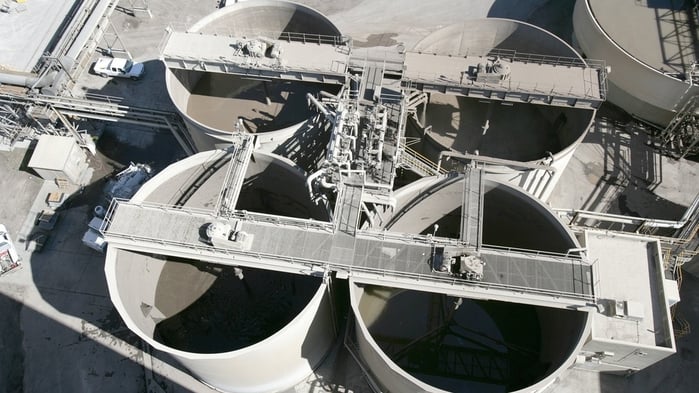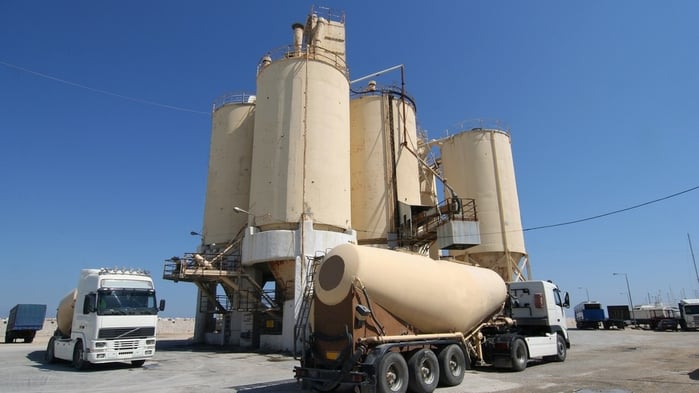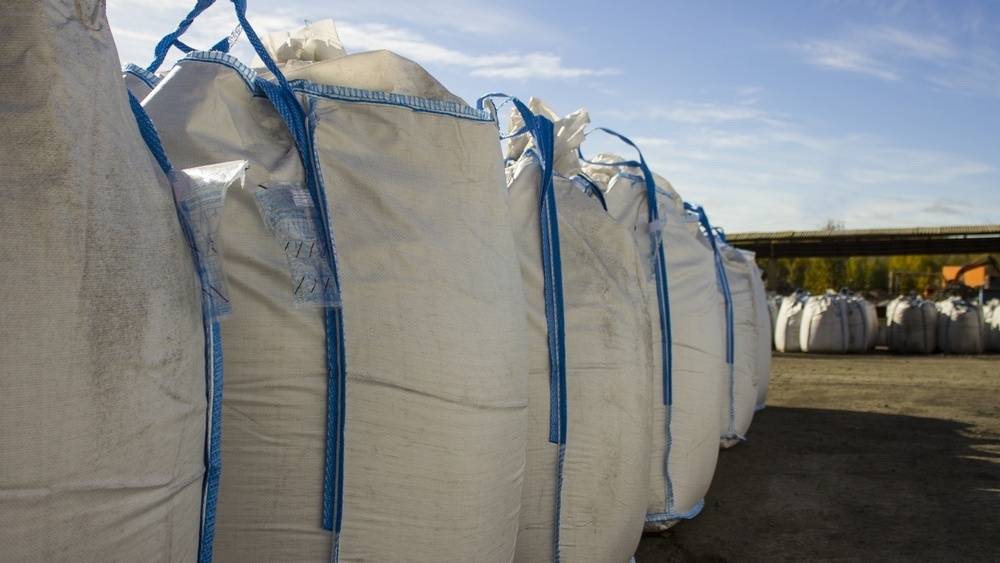
“Cement is by far the most important binding material in terms of quantity produced; indeed, it is possible that it may be the most ubiquitous manufactured material.” With these lines, Michaux, Nelson, and Vidick started in 1990 their chapter on “Chemistry and Characterization of Portland cement” in the book “Well Cementing.”
The quote puts in perspective the scale of the problem that cementers face:
Depending on the location of the cement factory, a great variety of natural and artificial raw materials are employed during the manufacturing process. As a consequence, the chemical and physical properties of the cement are highly variable, even within a given API classification. Consequently, a broad spectrum of results can be obtained with the same slurry design as most additives responses are strongly influenced by those changes in the cement.
The cement slurry design acquires worrying magnitudes when solid additives are chosen over liquid ones to tailor the slurry characteristics to the well needs. This is often due to availability, cost optimization or logistical efficiencies. The process of uniformly mixing those dry cement additives into the cement at the design concentration is termed “cement blending.” The importance of proper cement blending is evident when one considers that for some cement systems as little as 20 lbm of an additive is blended with 20,000 lbm of cement. Nonuniform additive blending (e.g., small variations in additive concentrations) or incorrect additive concentration results in improper slurry performance in the wellbore and may have drastic consequences in the well.
Read more: Cement slurry design for well applications: Standards you need to know
Ensuring a Successful Blend Quality:
Appropriate blending and handling of the cement blend could either facilitate a successful cementing operation or lead to a catastrophic failure with dramatic consequences; here are a few checks worth going thru regarding blend robustness, when preparing for a cement job:
1. Verification of additives ‘batch’ or ‘lot’ numbers:
The slurry designed is simply not the same if the batch of additives used in the lab is not the same as those in the blend from the bulk plant. Properties of additives vary from batch to batch; this is particularly dramatic with bulk materials (i.e., Silica, Hematite, etc.) which are standard components of the cement blends.
If the additives are not from the same lot numbers used in the pilot testing of the cement formulations, the blending operation should not start until a representative pilot testing is done with the actual materials to be used to blend the cement.
2. Verification of additive's key performance indicators:
Blends are typically made of two types of additives: specialized additives such as dispersants, retarders, etc., and commodity type of materials like sand, fly ash, coal, etc. The former ones are produced under strict controls and go thru processes of quality assurance and control (QA/QC) allowing negligible fluctuations in performances from batch to batch. The latter ones are either bi-products that go through no quality controls or the products of non-sophisticated manufacturing processes that lead to wide variations in product performance from one batch to the other.
With these commodities and with the cement itself, certain characteristics - which could fluctuate depending on the batch - are of paramount importance to ensure appropriate slurry performance. These are specific gravity and, in some cases, particle size distribution.
Ensure that all dry products specific gravities are measured via a helium pycnometer. For those applications requiring specific particle size distribution, go ahead and sieve the material, or use a digital particle analyzer, to confirm the appropriate sizes and percentages are in the mixture.
While the specific gravity of a Portland manufactured cement (as per API) is typically 3.15, the variations on the manufacturing process could, in places like the middle east, push that value as high as 3.23.
3. Selecting the blending procedure:
Operators and service providers around the world have their own blending procedures that are of corporate reach. They connect to those specific to the bulk plant in question, addressing equipment specifics, HSE regulations, and others. However, in general, all of them include two main aspects:
The Sandwich technique, which asks for additives to be added in the weight batch blender (WBB) in between two layers of cement that later on will be aerated/fluffed/transferred for homogenization.
The number of transfers between holding tanks, will dictate how homogenized the blend will become. We suggest at least Four pneumatic transfers. This can be achieved using one or two tanks and the WBB.
Other things to look at is making the necessary calculations to ensure the size of every single batch to be blended neither exceeds the capacity of the smallest vessel in the blending system nor 75% of the WBB volume.
4. Inspecting Bulk Equipment:
It is imperative that all bulk plant components (tanks, hoses, lines, fluffing jets, etc.) are inspected and confirmed to be completely clean of potentially contaminating materials (previous blends). The cleaning procedure needs to be performed before commencing the blending operation. The neat cement of a different batch from the one used for the pilot test should be considered a contaminant of the system and treated as such. This could be incorporated into the recipe, but previous test results are no longer valid.
Bulk equipment components should be inspected, calibrated and certified within the time frames established by the organization. A minimum of an annual inspection/calibration is expected for weight scales/cells and pressure release valves and a minimum of a five years test/certification for the pressure tanks should be available too.
5. Reduction of moisture injected into the blend:
The plant needs to be equipped with an efficient air dryer connected to the compressor to minimize injection of water droplets into the cement blend with the air used during blending. The water from the humidity trapped in the air will react with the cement creating cement rocks that could plug the system.
Also, just before the start of blending, it is highly recommended to drain the moisture sump of the air compressor to again reduce the chance of moisture contacting the blend. This is particularly important in countries where the humidity index is very high.
6. Sampling the blend:
The process of sampling is as essential as the process of blending since the samples are used to run confirmatory tests on the blend. The success of the cement blending operation is measured, on some occasions, by the concentration of cement additives in comparison with the target concentration of such additives.
Samples must represent the entire batch, so it's recommended to install sampling devices that allow for sample capture while blend is flowing. Samples taken from the top or the bottom of the tank are not advisable. Composite samples made of partial samples taken while flowing the blend at ¼, ½ and ¾ of the vessel capacity are the ideal and most representative samples that there is.
7. Cement Blends Quality Control Testing:
The first checkpoint for the quality of the blend is the measurement of its SG; this gives a clear indication of the right proportions of the major components in the mixture. Conventional slurry performance tests as per API procedures will then indicate the appropriate loading of functional additives are also present in the blend (i.e., dispersants, etc.).
For blends which density is not uniform among different samples or far from its target value, the lab should a) request new samples to verify measurements, b) request additional transfers of the blend to enhance homogenization, c) consider it a non-conformance and initiates the company’s decision tree to rectify the design flaw.
8. Delivering your product to the rig site:
A perfectly well-blended cement can be ruined if deposited in a contaminated bulk truck or sea vessel to go to the well site or offshore installations. Recommendations expressed above regarding bulk equipment inspection, sampling, etc., are all applicable to bulk cement transporters and on-site bulk storage vessels.
D ependent on the region you are working, getting the blend to location might be a tedious task. The rig can be hours away, and the bulk transporter may have to traverse through rough terrain, for example, “skid roads.” That may cause segregation of the bulk products, and you need to consider if what was deemed homogeneously mixed at the base stays that way through transport.
ependent on the region you are working, getting the blend to location might be a tedious task. The rig can be hours away, and the bulk transporter may have to traverse through rough terrain, for example, “skid roads.” That may cause segregation of the bulk products, and you need to consider if what was deemed homogeneously mixed at the base stays that way through transport.
In this case, best practice when arriving on location is to commit to a three (3) transfer process from silo to silo to re-homogenize the blend. Retrieve new samples and dispatch to the lab to confirm their SG, and in general re-assure that all other slurry properties are as expected.
Planning is key
As you can see, even when it goes unnoticed most of the time (maybe because it occurs so far away from the well site), the process of blending cement and its dry additives is far from being simple and expedite. It is complicated and represent the heart of the cementing operation even when it's done so many days before the cement unit’s triplex pumps are engaged.
The key takeaway is this: Plan and be meticulous in the preparation of your blend. Have sufficient time to correctly perform all necessary checks to ensure the desired blend characteristics are available on your silos on the rig site.
Planning and timely checks are your sole ammunition against the job failures that lead to poor cementing operations. Remember your well integrity is only as good as the cement behind the tubulars isolating a zone from another and all of them from surface!



